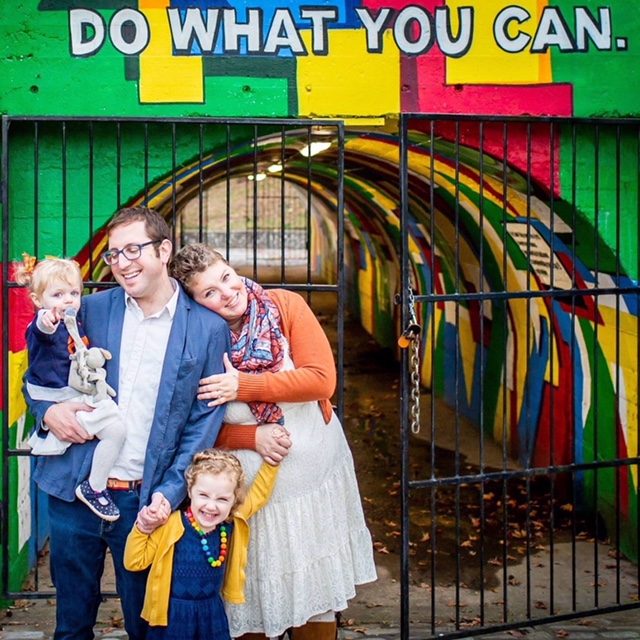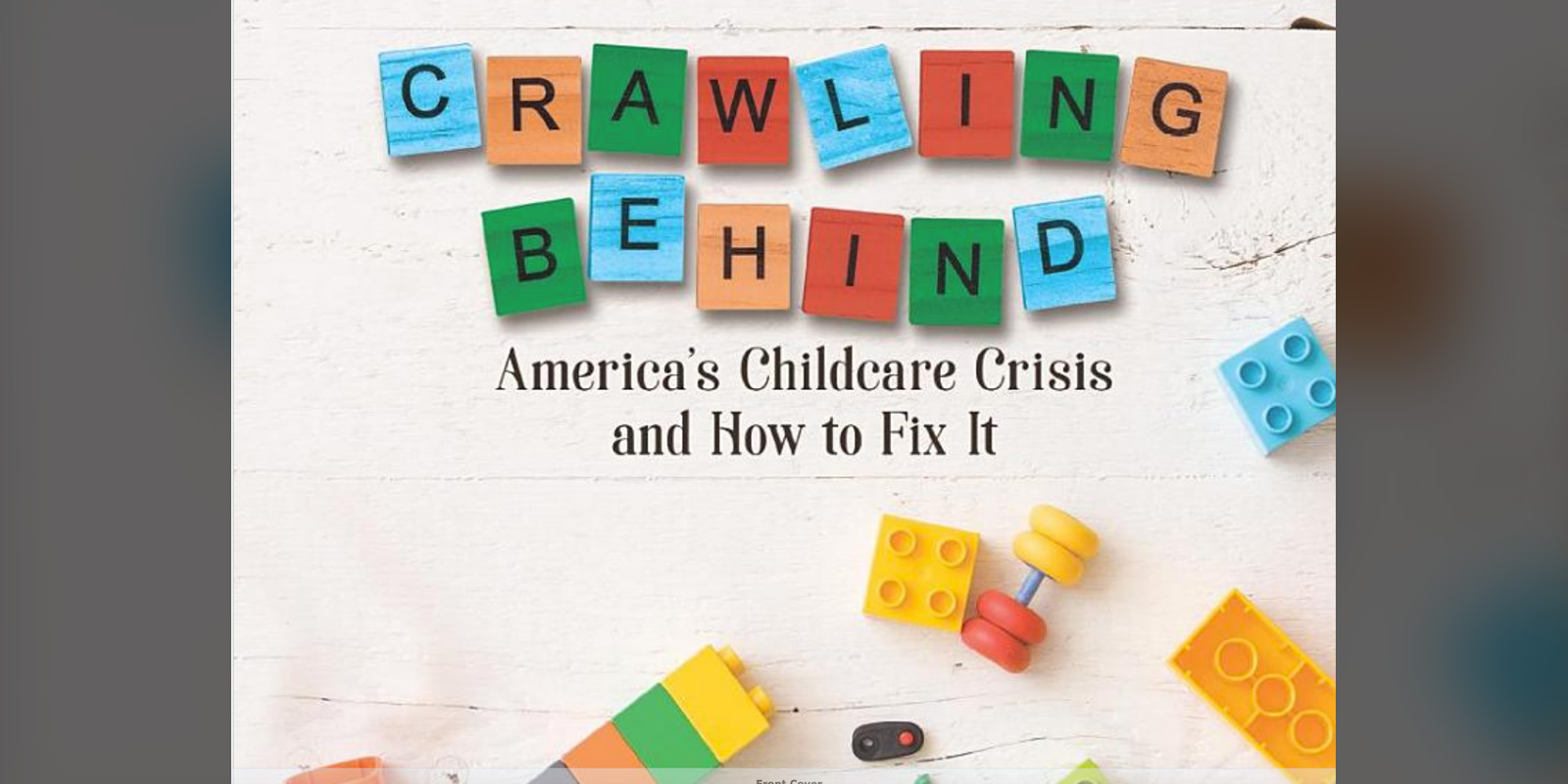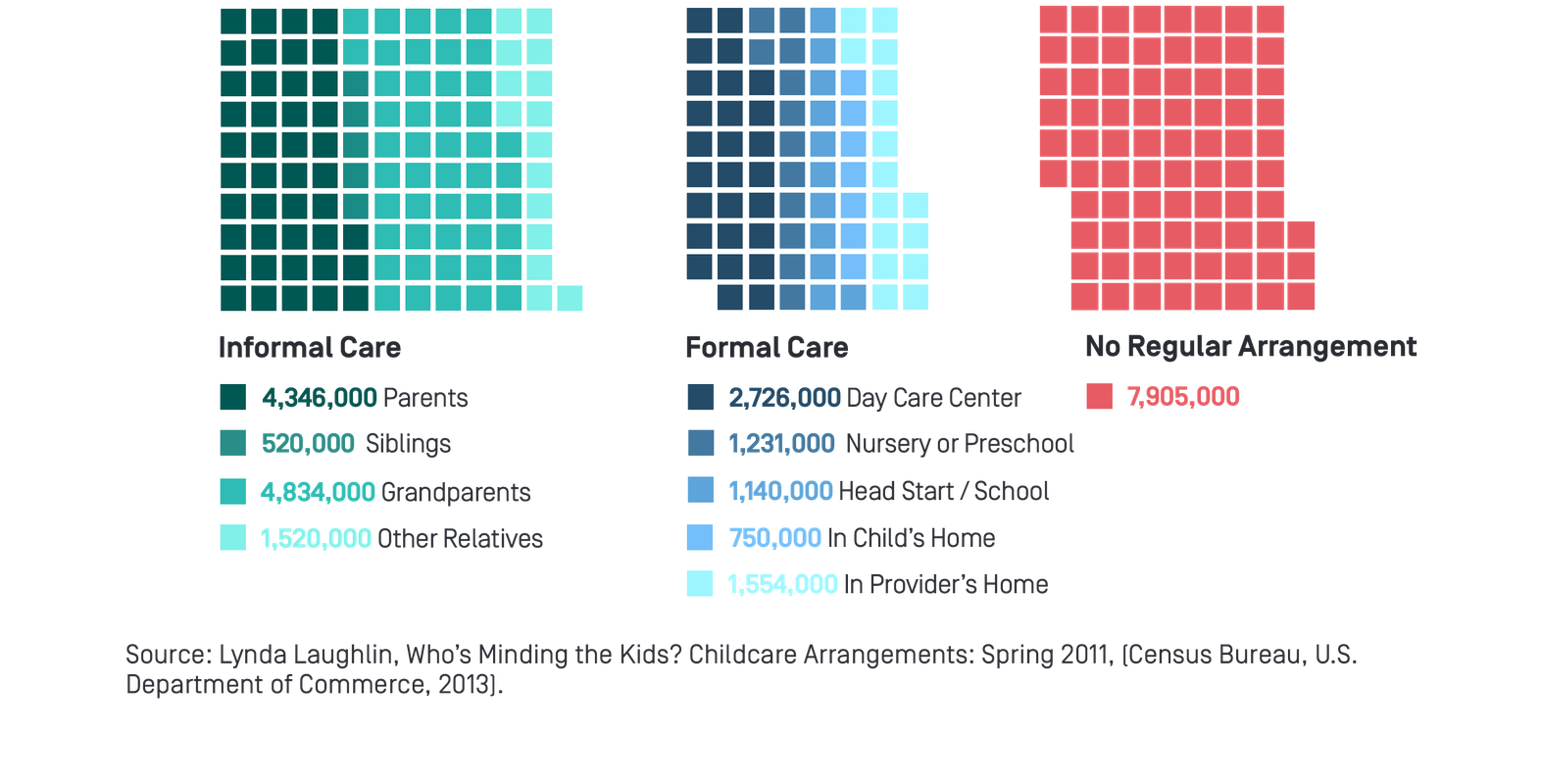Sometimes what seems like idealism at first can actually be canny realism. Case in point: Elliot Haspel’s recent book Crawling Behind: America’s Childcare Crisis and How to Fix It, proposes a big idea—giving families $15,000 a year to use for whichever childcare they choose. Nobody I spoke to, including the author, believes the federal or any other government is going to start cutting these checks anytime soon, but putting it out there is one of the ways the national conversation changes.
👉 Read Haspel’s USA Today editorial, Hey Democrats! Early childhood education and care should be free for all

“Quality and affordability are two sides of the same coin,” says Haspel. The key word here is coin. As in, this stuff costs money, and currently, “There’s not enough money in the system.” Without proper funding, all the things we count on to come from childcare—whether it’s about building young minds or simply enabling parents to work without worry—are out of reach.
Quality, for Haspel, simply means enabling a child to develop in a healthy way. The relationship between caregiver and child matters, and quality of care matters more than setting. “Regardless of what parents prioritize,” he says, “we want to honor those preferences while making sure all childcare settings have strong caregiver-child relationships and knowledgeable caregivers.”
Troublingly, some of the families Haspel spoke to reported sacrificing quality in order to make ends meet. He cites a family in Denver who pulled a toddler out of a highly rated childcare center so they could afford care for their second child.
We know what affordability means. Paying for childcare has never not been a problem, but the economics have gotten even more precarious in recent years. Childcare Aware of America estimates that the national average childcare cost is roughly $9,000 per child, per year. (See how your state stacks up.)
Some highs and lows of the childcare debate in the past several decades:
- 1940. With the Lanham Act, Congress establishes a national childcare program for families involved in the war effort. It is disbanded after World War II when returning male soldiers expect women to resume their motherly duties. (Read about “The Coolest Childcare Program You’ve Never Heard Of”)
- 1971. Richard Nixon vetoes the Comprehensive Child Development Act, which would have created a national network of federally funded childcare centers. (Read about “That one time America almost got universal childcare”)
- 1976. Child and Dependent Care Tax Credits are established to help working families with work-related childcare expenses.
- 1990. The Childcare and Development Fund arises, providing state, territory, and tribal governments with funding to support paying for childcare. (Read the complicated history here.)
- 2017. Senator Patty Murray (D-WA) and Congressman Bobby Scott (D-VA) introduce the Childcare for Working Families Act. Like Haspel’s book, the legislation is geared more toward advancing the dialogue and establishing a new childcare vision. (Read a summary by The Century Foundation’s Julie Kashen.)
- June 2019. Senator and Presidential Candidate Elizabeth Warren and S. Rep. Deb Haaland (D-N.M.) introduce their Universal Care and Early Learning Act. (Read the analysis by Early Learning Nation’s Tom Kertscher.)
- December 2019. The Trump Administration releases its Principles for Childcare Reform: Increasing Access to Affordable, High Quality Childcare in America, “designed to improve access to affordable, high-quality childcare and support working families by taking steps to increase investment, build the supply of childcare, cultivate the childcare workforce, and improve options for families across a range of high-quality settings.”
Haspel’s contribution to the discourse involves direct cash assistance, paid for by tax increases on individuals or corporations. The difference between this and other plans that involve raising taxes is what he calls instant R.O.I.; it pays for itself almost immediately by getting moms into the workforce. A similar plan in Quebec raised GDP by 2 percent.
I asked a few experts about Haspel’s plan. Here’s what I heard:
- Jacqueline Jones, The Foundation for Child Development: “This is a multifaceted problem that requires multiple solutions—coordination of federal funds, parental leave, tax credits and vouchers. Above all, we need to build public will. This isn’t just a nice thing to do. It truly matters for our future workforce and citizenry.”Not for Wonks Only: How Economic Arguments Ultimately Win the DayA recent paper by the Center for American Progress’s Sarah Jane Glynn and Katie Hamm reframes childcare as a “public good,” emphasizing “the important role that childcare plays in the economy, particularly the caregiving economy. The authors continue, “The economy, and society overall, can only function if people keep going to work, something that can only happen if someone—be it a parent, family member or paid caregiver—is providing childcare.”Reframing the debate isn’t just an academic exercise. It can lead to real change. As the University of California’s David L. Kirp has pointed out, “Consider the way the debate around early education changed after the evidence showed that preschool had long-term effects on everything from educational achievement and employment to rates of incarceration. After economists translated those gains into dollars-and-cents dividends, states started to increase spending on prekindergarten.”
- Julie Kashen, The Century Foundation: “Elliot’s proposal is incredibly helpful, adding a new dimension to the conversation by talking about free childcare—the same way many have been talking about free college. Getting everyone into the same program means there’s more buy-in. I support approaches that focus on affordability and flexibility for families, improving compensation for teachers, and culturally competent quality of care all at the same time.”
- Sonya Michel, Professor Emerita of history, University of Maryland, College Park. “My daughter in Seattle has one child and feels she can’t afford another, but she wants to continue to work. Many parents decide to stay at home when they can’t afford childcare. Rather than give all parents cash, I think a more effective approach would be to subsidize childcare providers, who are usually severely underfunded. Subsidizing childcare providers would make it more affordable for all.”
- Simon Workman, Center for American Progress. “The $15,000 per child amount that Elliot calls for is much closer to the true cost of high-quality childcare—although still below the true cost for infants—and is far above what most states pay in childcare subsidy at the moment. I am glad to see that Elliot’s proposal focuses on the full birth-to-five age range, given that learning begins at birth and too many initiatives in the past decade have focused only on the preschool years.”
While Haspel admits to being a policy wonk, he emphasizes that it will take more than wonks to advance change. Parents and educators can speak to their elected leaders. “The more this is recognized as a middle-class issue,” the greater the chance of a response. He praises the Grassroots Movement for Childcare and Early Education as a platform for amplifying community voices as well as Care for All Children, an initiative of the David and Laura Merage Foundations
In Crawling Behind’s final chapter he acknowledges that this model might not work politically and discusses some of the alternatives, including a public system approximating what the U.S. already does for K-12, a voucher system and credit variations depending on different criteria.
He also expressed hope that states or municipalities would take the lead on the issue, seizing the mantle of being the most child-development-friendly place to live. “And I guarantee success,” he says.

Mark Swartz
Mark Swartz writes about efforts to improve early care and education as well as developments in the U.S. care economy. He lives in Maryland.




